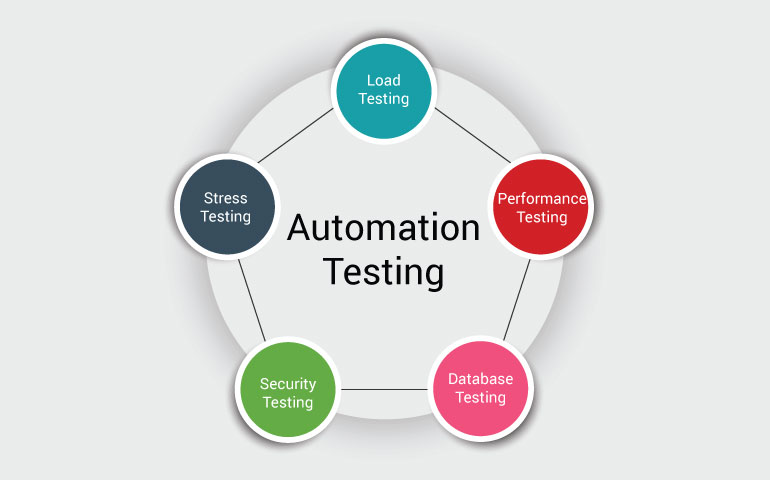Automation Testing Techniques: Best Practices for Seamless Assimilation
Automation Testing Techniques: Best Practices for Seamless Assimilation
Blog Article
Ensuring Success in Automation Checking: Key Metrics, Difficulties, and Solutions Every QA Group Ought To Know
In the world of software top quality assurance, the landscape of automation screening is ever-evolving, demanding a thorough technique to ensure seamless operations. The trip to mastering automation screening is led with nuances that call for a keen eye for surveillance, analysis, and continual enhancement. As the sector pushes forward, the pursuit for optimal efficiency in automation testing stays a continuous quest, advising QA groups to furnish themselves with the expertise and strategies vital for victory.
Significance of Key Metrics
Understanding the importance of crucial metrics is important for examining the efficiency and effectiveness of automation screening procedures. Secret metrics act as quantifiable actions that provide important insights right into numerous facets of the screening process, such as examination protection, examination implementation time, issue thickness, and test case performance. By assessing these metrics, QA teams can identify bottlenecks, inadequacies, and locations for renovation within their automation screening framework.
One vital facet of crucial metrics is their ability to track progress and check the overall health of the testing procedure (automation testing). They make it possible for stakeholders to make informed choices based on data-driven insights, which can result in extra effective screening strategies and much better source allocation. In addition, vital metrics can assist groups established reasonable objectives, gauge the success of automation initiatives, and show the ROI of automation testing efforts

Typical Difficulties Faced
Obstacles typically come across in automation screening processes can dramatically impact the total performance and effectiveness of QA groups. One of the major obstacles is the selection of the right test cases for automation. Not all test instances are ideal for automation, and choosing the incorrect ones can cause lost time and sources. Additionally, keeping examination manuscripts can be a daunting task, specifically as the application undergoes constant modifications. Examination script maintenance needs continual updates and modifications to ensure they show the existing functionality properly. An additional common difficulty is the first investment needed for establishing automation structures and devices. This can be an obstacle for some organizations, particularly smaller sized ones with limited spending plans. Automation screening may not cover all aspects of testing, such as use and customer experience screening, which still need manual intervention. Overcoming these difficulties calls for correct planning, calculated test instance selection, robust maintenance procedures, ample sources, and a clear understanding of the restrictions of automation testing.
Reliable Solutions for Difficulties
To address the obstacles come across in automation testing, implementing reliable options is important for boosting the effectiveness and performance of QA groups. One crucial remedy is to buy robust training programs for QA teams to ensure they have the essential skills to successfully use automation devices. Training can bridge knowledge spaces, boost understanding of automation structures, and boost scripting capacities, ultimately resulting in a lot more effective test production and implementation.
Another crucial solution is to develop clear interaction channels within the QA group and with other stakeholders, such as developers and project supervisors. Effective communication aids in lining up assumptions, sharing progression updates, and promptly addressing concerns or barricades that may occur throughout the automation testing procedure.

Monitoring and Analysis Methods
Carrying out efficient tracking and analysis strategies is essential for ensuring the success and effectiveness of automation screening processes. In see post addition, assessing test outcomes and metrics gives valuable understandings into the top quality of the software program being tested and the performance of the testing approach.
One key strategy in monitoring and analysis is the usage of control panels that combine appropriate metrics and KPIs in an aesthetically easily accessible layout. These control panels use a detailed summary of examination execution condition, test protection, defect patterns, and various other important information. Frequently investigate this site evaluating and analyzing these dashboards can aid QA teams make notified decisions, prioritize tasks, and optimize screening efforts.
Furthermore, executing automated signals and alerts based upon predefined limits can improve positive tracking and prompt treatment. By establishing signals for performance discrepancies or test failings, teams can deal with problems promptly and stop them from rising. In general, monitoring and analysis methods play an essential duty in making sure the effectiveness and success of automation screening initiatives.
Constant Improvement Methods
Enhancing the effectiveness of automation testing procedures requires the consistent improvement of approaches and approaches. Constant improvement techniques are essential for QA groups to adapt to advancing technologies and provide high-quality software items. One essential strategy to enhancing automation screening processes is to perform regular testimonials and retrospectives. By analyzing past screening cycles, groups can determine bottlenecks, ineffectiveness, and areas for improvement. Carrying out comments loops and incorporating lessons learned right into future screening structures can generate considerable enhancements in time.

Verdict
Finally, it is essential for QA groups to recognize the key metrics, difficulties, and remedies in automation testing to make certain success. By thoroughly keeping an eye on and evaluating information, applying efficient solutions to typical obstacles, and constantly enhancing strategies, QA teams can optimize their screening procedures and supply high-grade software. Complying with these methods will inevitably lead to a lot more reliable and reliable automation testing practices.
By description examining these metrics, QA teams can determine traffic jams, ineffectiveness, and locations for enhancement within their automation screening structure.
Furthermore, crucial metrics can aid teams set realistic goals, determine the success of automation initiatives, and demonstrate the ROI of automation screening initiatives.
Difficulties frequently experienced in automation screening procedures can considerably influence the overall efficiency and effectiveness of QA groups. Automation testing may not cover all facets of screening, such as usability and customer experience screening, which still need hand-operated treatment.In conclusion, it is crucial for QA groups to understand the essential metrics, challenges, and options in automation testing to make sure success.
Report this page